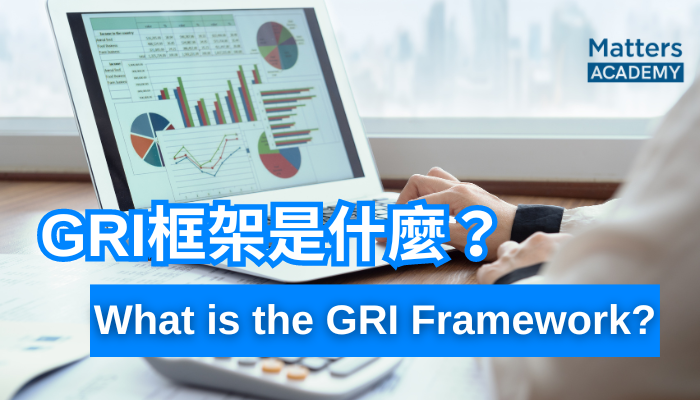全球不少國家地區均開始要求企業提交環境、社會和管治(ESG)報告,而除了本身地區的準則要求,全球報告倡議組織(GRI)在可持續性報告標準中持續成為最多企業使用的框架之一。
全球ESG報告的基石
根據畢馬威2022年可持續性報告調查,全球領先的250家公司(稱為G250)中有78%採用了GRI披露。這種參與涵蓋各個行業和地區,全球公司如蘋果、微軟、亞馬遜和沃爾瑪經常利用GRI指標和管理方法。
而在亞洲地區,不少企業亦大幅採用GRI。香港會計師公會報告稱,65%的本地企業在制定可持續性報告時參考了GRI。隨著ESG報告的發展日趨成熟,其他地區也在效仿此先例。
為什麼GRI如此受到廣泛認可?
GRI於1997年由全球永續性標準理事會成立,通過多方參與的過程創建了一個具有全球適用性的框架。它們所制定的標準不斷演變,以全面、平衡的方式應對不同的新議題。
GRI框架包括三個標準:通用標準(GRI 1-3),行業標準(GRI 11-13)和主題標準(GRI 200, 300, 400系列)。GRI於2023年發布了最新的通用標準,新增了人權披露和綜合盡職調查報告的強制性要求。
GRI 1介紹了GRI標準的目的和體系,以及可持續性報告的關鍵概念。GRI 2提供了組織的披露指南,而GRI 3則提供了逐步指導,用於確定和管理重要議題。
對於初接觸ESG報告的使用者,GRI提供了一個路線圖,無論在評估績效、了解相依性/結果、風險管理及與利益相關者互動都給予了清晰的指引。
為了追求高質量的可持續性報告,GRI要求組織在編制報告時應遵守報告原則。
報告原則包括:
- 準確性:報告的信息應該準確詳實。
- 平衡性:報告應該公正地反映組織的正面和負面影響,客觀地,不帶有偏見。
- 清晰性:信息應該清晰地呈現,易於理解。
- 可比性:應該使用一致的標準來選擇、編制和報告信息,以便組織可以分析隨時間推移的影響趨勢,並與同行業者比較績效。
- 完整性:應提供足夠的信息來評估組織在報告期間的影響。
- 可持續性背景:在報告實質影響時,應考慮更廣泛的可持續性因素。
- 及時性:信息應該定期且及時地披露,以便用戶能夠做出及時的決策。
- 可驗證性:數據收集、編制和分析方法應該是可驗證的,以確保報告的質量。
總括而言,GRI報告框架為披露內部和外部信息提供了全面的結構和指導。這有助於組織擴大視野,通過識別優勢和劣勢來改善風險管理。GRI框架還可以通過增強組織與利益相關者之間的溝通和互動來建立聲譽和信任。
儘管GRI是全球最廣泛使用的ESG或可持續性報告框架之一,但這並不意味著所有組織都應該使用它。組織應該選擇最適合並符合其獨特業務優先事項和重要議題的框架。關鍵在於選擇一種能夠促進透明地報告對企業和其利益相關者長期可持續性最重要問題的方法。
What is the GRI Framework?
As interest in environmental, social and governance (ESG) reporting grows exponentially around the world, one framework continues to dominate among corporate sustainability reporting standards - the Global Reporting Initiative (GRI).
A Cornerstone of ESG Reporting Worldwide
KPMG's Survey of Sustainability Reporting 2022 found an impressive 78% of the world’s leading 250 companies (known as the G250) incorporate GRI disclosures. This engagement spans all industries and regions, as global companies such as Apple, Microsoft, Amazon and Walmart routinely leverage GRI indicators and management approaches.
Closer to home in Asia, Hong Kong in particular has seen rapid adoption. The Hong Kong Institute of Certified Public Accountants reports 65% of local firms reference GRI when crafting their sustainability communications. As ESG reporting matures, other areas are following this precedent.
Why Does GRI Resonate So Strongly?
Established in 1997 by the Global Sustainability Standards Board, GRI was created through a multi-stakeholder process to develop a globally applicable framework. Their comprehensive standards have evolved continuously to address new topics through balanced participation.
The GRI framework consists of three standards: Universal Standards (GRI 1-3), Sector Standards (GRI 11-13) and Topic Standards (GRI 200, 300, 400 series). GRI released its latest Universal Standards in 2023, adding mandatory human rights disclosures and integrated due diligence reporting.
GRI 1 introduces the purpose and system of the GRI Standards as well as key concepts of sustainability reporting. GRI 2 provides disclosure guidelines for organisations, while GRI 3 offers step-by-step guidance on identifying and managing material topics.
A set of Universal, Sector and Topic Standards provide modular guidance compatible with various reporting needs. GRI's strength lies in its rigorous approach. The recently updated Universal Standards, GRI 1-3, require identification and prioritisation of material topics and impacts.
For early stage reporters, GRI supplies a roadmap to benchmark performance, understand dependencies/outcomes, manage risks proactively and transparently engage stakeholders.
To pursue high-quality sustainability reporting, GRI requires organisations to apply reporting principles when compiling their reports. The reporting principles include:
- Accuracy: Reported information should be accurate and detailed.
- Balance: Reporting should be done in a fair manner to reflect both positive and negative impacts of the organisation objectively, without bias.
- Clarity: Information should be presented clearly and in an easily understandable way.
- Comparability: Consistent standards should be used for selecting, compiling and reporting information so that organisations can analyse impact trends over time and compare performance against peers.
- Completeness: Sufficient information should be provided to evaluate the organisation's impacts during the reporting period.
- Sustainability Context: Broader sustainability factors should be considered when reporting material impacts.
- Timeliness: Information should be disclosed regularly and in a timely manner so users can make prompt decisions.
- Verifiability: Data collection, compilation and analysis methods should be verifiable to ensure reporting quality.
In conclusion, the GRI framework provides a comprehensive structure and guidance for disclosing both internal and external information. This helps organisations broaden their perspectives and improve risk management by identifying strengths and weaknesses. The GRI framework can also help build reputation and trust by enhancing communication and interaction between organisations and stakeholders.
While GRI is one of the most widely used ESG or sustainability reporting frameworks globally, it does not necessarily mean all organisations should use it. Organisations should choose a framework that is most suitable and aligned with their unique business priorities and material topics. The key is selecting an approach that facilitates transparently reporting on issues most important to the long-term sustainability of the business and its stakeholders.


